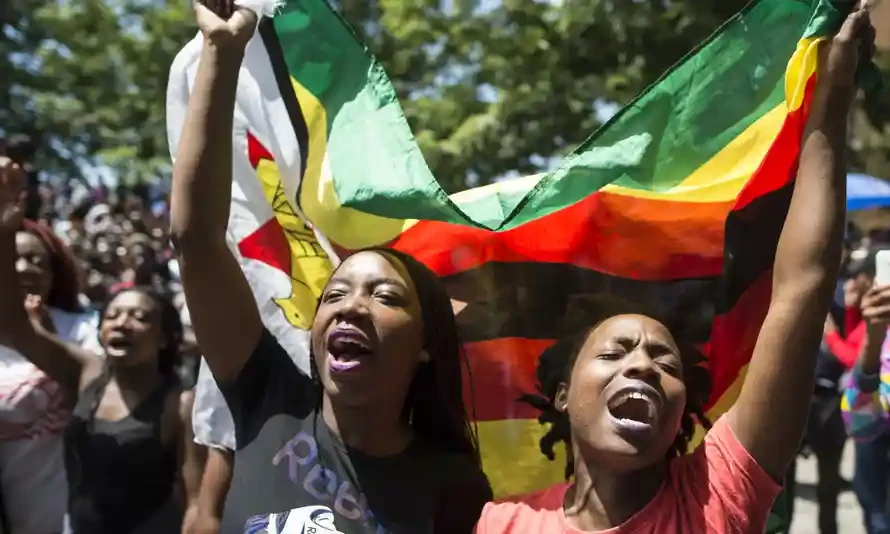
AS the world commemorated Women’s History Month and International Women’s Day on March 8, there is no better time than now to reflect and interrogate women’s representation in the 10th Parliament in Zimbabwe.
Numbers don’t lie. The metrics will aid us in gauging the state of women inclusion in governance and politics in Zimbabwe. According to ZimStats (2022) women constitute 54% of the Zimbabwean population and approximately half of the electorate.
However, there is a mismatch between the women’s population and the number of women directly elected to Parliament. Only 22 women (10%) were directly elected out of the available 210 national assembly seats. This not only reflects the underrepresentation of women in governance, but the deafening absence of representative democracy in Zimbabwe.
Parliament of Zimbabwe is bicameral composed of the Senate and the National Assembly. The National Assembly is the lower legislative body (house) with 280 members out of which 210 are elected directly from the 210 geographic and administrative constituencies across the country.
The remaining 70 seats are reserved for women (60) and youth (10) quotas. The Senate on the other hand, is the upper house and constitutes 80 members, of which 60 are elected by proportional representation from ten six-member constituencies consistent with the country's provinces. Out of the remaining 20 seats, 18 are reserved for chiefs and two for persons with disabilities.
While the introduction of the women’s quota was a progressive democratic gesture, its unintended consequence was constraining the filtering of competitive electable women candidates to the quota representation stream which yields no political power, constituency and no constituency development fund. While honourable, the quota system has in a way diluted the potency of women’s representation.
Back to the metrics. According to the 1997 Southern African Development Community (Sadc) declaration on gender and development, the minimum threshold for women’s representation should be 30%. Sadly, in the August 2023 elections, 22 women were directly elected for the 210 lower house seats out of the 70 women who contested against a staggering 637 male candidates.
This equates to 11%, thus falling short of the Sadc declaration threshold of 30%. An analysis has shown that this is an unhealthy trend in Zimbabwean elections. In 2018, the number of women who contested against men equated to a meagre 14%. The metrics paint a grim picture of women’s representation in the 10th Parliament at Mt Hampden.
- Mavhunga puts DeMbare into Chibuku quarterfinals
- Bulls to charge into Zimbabwe gold stocks
- Ndiraya concerned as goals dry up
- Letters: How solar power is transforming African farms
Keep Reading
To expose the lackadaisical democratic progress or lack thereof, it is important to go back in history. In the immediate aftermath of independence in 1980, the first ever Parliament in Zimbabwe had only 3 women that equated to a mere 8% of the total seats in Parliament then.
In 1990, there was 11% women’s representation; 14% in 1995; and a decline to 9% in 2000 then 16% in 2005. The metrics are depressing — let us just pause at 2005. Despite the increase in women’s representation mostly owed to the women’s quota there is still nothing to celebrate with regards to women’s representation and representative democracy in Zimbabwe.
The grim reality was worsened by the pronouncement of a male-dominated Cabinet by President Emmerson Mnangagwa soon after the August 2023 elections. As if the Parliamentary marginalisation of women was not enough, President Mnangagwa went on to appoint only six (23%) women into his 26-member Cabinet. In total, out of President Mnangagwa’s 67 ministerial deployments (ministers, deputy ministers and permanent secretaries) only 17 (25%) were women. How then can the biggest marginalised demographic group in the country be adequately and meaningfully be represented?
As we celebrate women’s history month, it is imperative that we underscore the importance of women’s inclusion and representation. It is important to note that increased women's representation in Parliament brings diverse perspectives and experiences to the decision-making process.
History, empirical and anecdotal evidence from countries like Rwanda, has shown that women lawmakers have been instrumental in advocating policies that address gender-based violence, economic empowerment for women and improved access to healthcare and education.
To achieve these similar milestones, it is imperative for government, civil society organisations, media houses and other development and human rights actors to start deliberately, intentionally and systematically advancing the representation and inclusion of women in Parliament and other governance entities.
- Phillip Nyasha Fungurai is a human rights activist, Monitoring and Evaluation Specialist and interdisciplinary researcher in the fields of human rights, peace, governance, civic participation, development management and youth development. He currently serves as the Learning and Innovation Catalyst for the Zimbabwe Human Rights Association (ZimRights).










